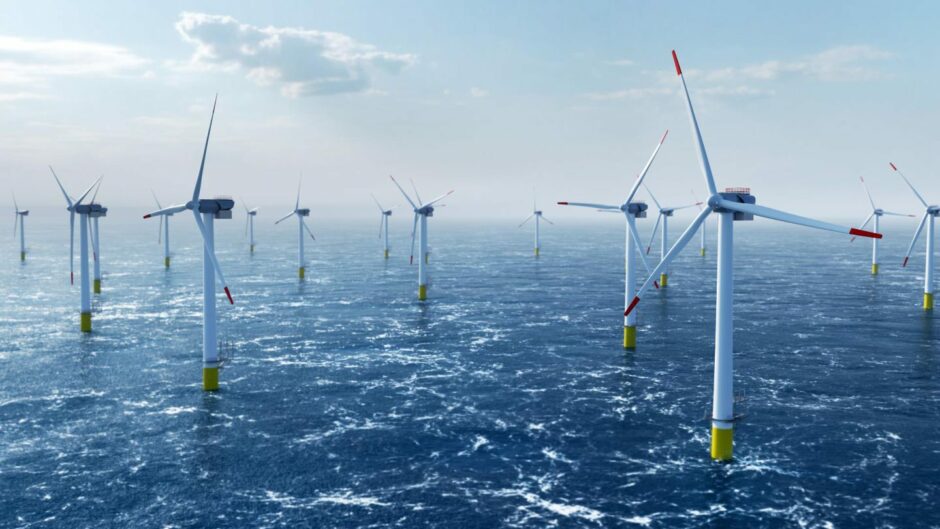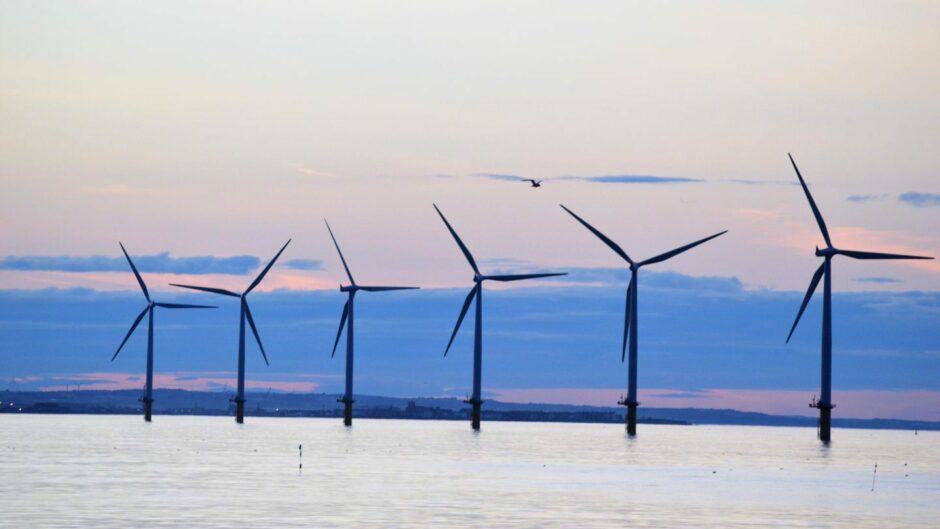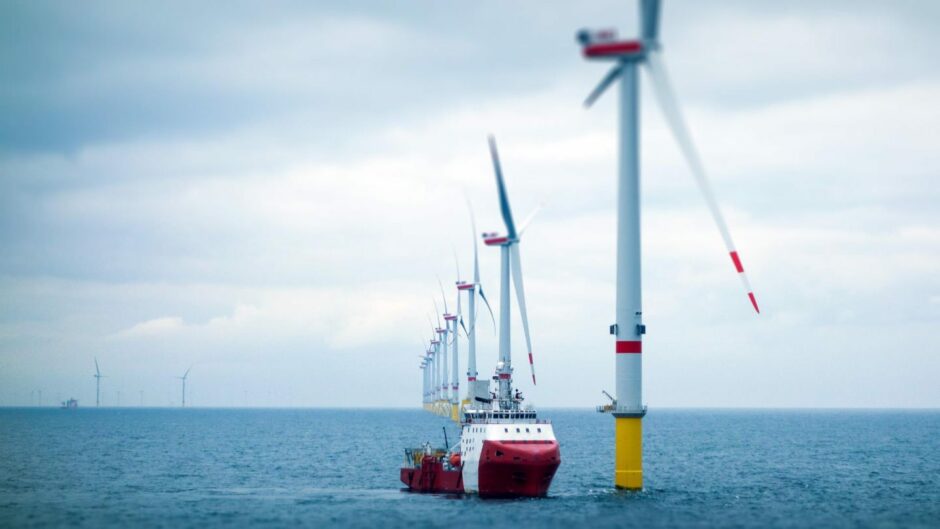
In the first episode of Season 2 of the Gigawaters podcast, Sustainable Growth Voice editor Felicia Jackson and her guests discuss the challenges and opportunities in deploying Scotland’s 28GW offshore wind pipeline.
Co-host Nick Ritchie, Development Director for Stromar, and special guest Richard Britton, Global Head of Offshore Wind at developer Renantis, joined the pod to explore what the huge step up in ambition for ScotWind means for Scotland in terms of supply chain, grid design, skills, innovation and more.
The energy crisis is changing the strategic role of offshore wind but challenges remain
No one can ignore the impact of the Ukraine war and the resulting energy crisis, as well as how they have disrupted supply chains in a range of commodities, goods and services. As Nick Richie points out, this has really emphasised at a government level “the real need for speedy access to cheap renewable energy as a strategic resource.” He adds: “There is ambition in Scotland to deliver on these projects not only to provide energy security, but also to provide inward investment into the Scottish supply chain to provide lots of renewable energy jobs in Scotland, as well as wider benefits to local communities.”
There are still challenges to overcome in deploying offshore wind at such a scale and in such short order, including planning consent issues, access to the grid in the timely manner, access to a skilled workforce, and how we select and serial manufacture floating substructures at scale.
ScotWind is an opportunity to improve the planning and consent process
Richard says: “We’ve suffered delays in offshore projects for the last six or seven years with major infrastructure projects” but he says there is a real opportunity for the Scottish Government to deliver, especially with regard to the permitting process. At the moment major projects are taking longer than they should to get through the planning system, and that has a knock-on effect everywhere.
Both Nick and Richard agree that consents and permitting, alongside grid design and management and addressing the skills gap are where the focus needs to lie in order to maximise the opportunities that ScotWind provides. Richard Britton says it’s vital that the “decision making process is done promptly, it’s done robustly and it’s safe from judicial review as well, which seems to be a growing trend – in that post-decision projects are being held up whilst they are under legal challenge.”
Richard says: “In the first instance the first opportunity is to deliver these decisions on time and that would give the offshore wind industry a much greater feel for certainty within delivery of the projects.” It is this certainty that enables investors to make long term strategic plans and what we can build education, training, supply chain and innovation deployment around.

Grid connections will prove critical to rapid deployment
National Grid (LSE:NG) is stepping up in terms of holistic network design, looking at the strategic delivery of the grid across offshore wind in the UK as well as in Scotland. The way the UK has been set up historically is that each project must be individually connected, and that means a lack of certainty around where the grid connections might be, and when they’ll come online.
In the UK, what traditionally happens is that the developer will build both the wind farm and then the transmission asset then, through a regulated sale, will divest that transmission asset to a third party. What’s needed to transform the system is quick decisions from the National Grid on how it’s going to be approached and then, behind that, is the competition rules that sit around how the transmission assets work. As Richard points out: “Fundamentally, the transmission assets can cost anywhere up to £1 billion. So as developers, we want to be very clear about how that money is going to be recovered and ensuring that it’s done in an economic way.”
The Impact of infrastructure investment and green ports
One of the biggest opportunities around ScotWind lies in support for the development of green infrastructure and ports to support such massive investment. It’s probably the biggest set of infrastructure and construction projects that Scotland will see in the next few decades. Richard notes that developments on the East Coast have helped deliver offshore wind and real tangible benefits to local communities.
While there a huge amount to be done, there is a massive opportunity for ScotWind to lead the charge for investment in supply chain skills, port development and Richard points to the green ports announcement as a signal on ensuring that the “process of making sure that the ports infrastructure is in place in good time, and that we are really driving the skills agenda at every level”.
Green jobs and skilling up for the transition
At the moment, nearly every country with a coastline is seeing offshore wind as the driver towards delivering its net zero target. On the one hand, we have a positive with regards to the move towards renewables but, on the other hand, the challenge lies in supply chain and skills.
Of course, as Richard points out: “It’s not a unique issue to Scotland, nor is it something Scotland can take for granted with regards to having all the attention of the world supply chain in delivering on the huge amount of potential that is in Scottish waters.”
It’s not even as simple as the growing demand for skills in the offshore wind industry – many industries are facing a skills shortage. The most recent oil and gas workforce report (which report? We should have a link) warns of skills shortages. Speaking as someone who moved from oil to wind, Nick says that any element of creating green jobs is going to require an element of reskilling and upskilling from oil and gas. There is also a need to get the message out and attract young people into the sector.
Richard agrees and adds: “We need to see generations to come coming through schools and colleges and universities, and we need to really be targeting those people and those institutions to make sure that they’re delivering the right people into the industry as we as we step forward we’ve seen.” He points out the successful growth along the East Coast of England through the round three offshore wind process, where colleges and schools have turned their attention to delivering courses that that support our industry.

Working together to achieve a sustainable Scotland
Nick explains that the discussion is really about stable and sustainable opportunities in the supply chain. And really what that means is that it’s not a race to the bottom in terms of the price or the quality or the delivery and so on and so forth, but “how do we create sustainable opportunities for Scotland and Scottish suppliers”.
He says that what we need to see is an ecosystem of collaboration: “There’s not one thing that needs to happen, but rather many different things that need to fall into place.” That includes between the enterprise communities, collaboration between the government, and focus on where Scotland has strengths in the supply chain, as for example with its innovation hubs. He adds: “We perhaps need to look at the scope and scale of the challenge. With ScotWind setting out almost 28 gigawatts to be developed over the next 10 or 15 years it’s an astronomical goal, and I I really can’t think of any other country in the world that’s really attempted this. We need to leverage across all areas of expertise and build upon that as a capacity base, rather than looking at things on a project by project basis.”
What’s really important is understanding what is changing about the wider energy environment, and getting different groups to work together. As Richard notes, one of the key drivers pushing everyone in the same direction is the setting of climate targets by the EU, the UK, the Scottish government and governments around the world.
“The reason we’re delivering offshore wind is because we’ve identified there’s a climate emergency. And that’s why we’re doing this. We’re driving in that direction to meet these targets to, to decarbonize the economy, to try and protect the earth from global temperature,” he says. “When I think of the word collaboration, the collaboration is working towards delivering on net zero targets on delivering the fight against climate change.”
While permitting, consenting and grid connection are often the focus of discussions about scaling offshore wind, in the end its about creating a collaborative, holistic approach to overcoming challenges as they arise, and recognising that decisions must be made in ways that take into consideration the needs of the industry, and the economy, for years to come. As Nick says: “We are living in a world where we need access to green energy, in a world where energy is a strategic resource and getting access to cheap energy is vital to the success of society – we need to provide cheap, green electrons to the market as quickly as possible”. We know how to make that happen, so its time to move away from uncertainty and ensure that ScotWind’s pipeline becomes a reality.
Listen to episode 01 of the second season of Gigawaters here.
Recommended for you







